A lot of people don’t realize this, but the game localization process is more than just translating the game itself – it also includes all packaged material too, like instruction booklets, text on the box, and stuff like that. With that in mind, let’s take a look at the Japanese and American versions of the Super Mario Bros. instruction manual!
Instruction Manual Comparison
Again, for sanity’s sake, we’re only going to look at the instruction booklet that came with the standalone cartridge versions. I’m fairly certain the American booklet content is the same for all the different versions (SMB-only cart, SMB + Duck Hunt cart, SMB + Duck Hunt + World Class Track Meet), but I’d be surprised if the instructions for the Famicom Disk System version were 100% exactly the same. Anyway, let’s get on with it already!
The two instruction manuals are actually surprisingly similar – they’re practically the same! Still, let’s take a look at it all and see if we can’t dig up some stuff.
For complete reference, here are scans of both instruction booklets. I really don’t know where the American guide scans come from. The Japanese scans are mine – I couldn’t find any online so I paid like $9 on eBay for a really beat-up Japanese manual. Ouch. So I might as well share it with other fans too.
Covers
All right, here’s the front cover. The cover of the Japanese manual has a black-and-white version of the game’s box art. The American manual is mostly black and boring. On closer inspection, I think it’s supposed to be a starry background for some reason.
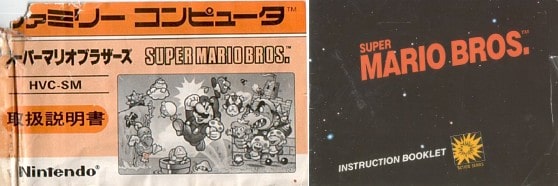 |
Game Story
The game’s story is included in both manuals The text is essentially the same, but here’s my own literal translation of the Japanese text as it compares to the official English text.
| Japanese Version (basic translation) | English Version |
| STORY | OBJECT OF THE GAME/GAME DESCRIPTION |
| One day, the Koopa, a tribe of large turtles capable of using powerful magic, invaded the peaceful kingdom of the Mushroom People. They used their magic to transform all the Mushroom People into things like rocks, bricks, and horsetail plants, thus causing the Mushroom Kingdom’s downfall. | One day the kingdom of the peaceful mushroom people was invaded by the Koopa, a tribe of turtles famous for their black magic. The quiet, peace-loving Mushroom People were turned into mere stones, bricks and even field horse-hair plants, and the Mushroom Kingdom fell into ruin. |
| The only one who can lift the spell on the Mushroom People and bring them back to life is the Mushroom Kingdom’s Princess Peach. She is currently in the clutches of Great Demon King Koopa. | The only one who can undo the magic spell on the Mushroom People and return them to their normal selves is the Princess Toadstool, the daughter of the Mushroom King. Unfortunately, she is presently in the hands of the great Koopa turtle king. |
| Mario has stepped up to defeat the Turtle Tribe, save Princess Peach, and restore peace to the Mushroom Kingdom. | Mario, the hero of the story (maybe) hears about the Mushroom People’s plight and sets out on a quest to free the Mushroom Princess from the evil Koopa and restore the fallen kingdom of the Mushroom People. |
| The Mario inside the TV is you. Only you can bring this adventure quest (expedition) to a conclusion. | You are Mario! It’s up to you to save the Mushroom People from the black magic of the Koopa! |
For the most part, they’re the same, but since localization is all about details, let’s break out the magnifying glass and take a look at what we can find.
The first big thing to raise question marks over my head is the part about “horse-hair plants” in the English instructions. I honestly had no idea what the heck it was talking about, and at first I assumed it was just a translation error. It turns out it’s not really wrong at all, it’s actually referring to horsetail plants.
I’m still baffled as to why the story would say something so specific like that rather than just “plants”. I’m also not even sure any such things even show up in the game – we see the bricks in the game, and I guess we technically see rocks in the ground Mario walks on, but horsetail plants? I don’t think it’s referring to the Piranha Plants or the vines in the game, so I don’t know what else it could be referring to. My best guess is that they’re the oval-shaped trees in the backgrounds of some stages.
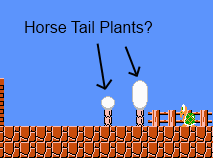 |
Next, we see the change from Princess Peach to Princess Toadstool here. I’m wondering why a kingdom of mushroom men would have a non-mushroomy princess. In that regard, I’ve always liked “Princess Toadstool” better, but as the Mario games progress, the whole mushroom motif really gets lost anyway, so I guess it doesn’t matter too much.
We also see in the English story a reference to the “Mushroom King”, yet he’s nowhere to be found in the Japanese text. As a kid, the fact we only ever see the princess and her servants always gave me the impression that there IS no king.
Then we see that the main villain goes by slightly different names in both versions. “Great Demon King Koopa” in Japanese and “the great Koopa turtle king”. The Japanese title is a little tough to translate well though, as it’s such an open-ended word – I’ve seen 大魔王 (daimaou) translated into tons of different things, from “Great Demon King” to “Magic Lord”. The trouble is the “魔” in there, it’s such a slippery little thing to get ahold of.
Incidentally, as we’ve already seen, he’s called Bowser in America, but if you wanted to talk about him to a Japanese gamer, you’d simply call him “Koopa” instead. That’s what he’s known as over there.
Next, it’s interesting to see in the Japanese text how they start off by calling them the “Koopa Tribe”, but then in paragraph three they’re suddenly the “Turtle Tribe” instead. Even more interesting is that the localizers picked up on that inconsistency and smoothed it out. Nice! But then later on in the English instructions they actually do use “turtle tribe” sometimes. Doh.
In the English text, the word “maybe” is in parentheses. When I read it quickly, it sounds at first like it’s modifying the “hears” part, which makes it a weird sentence. It’s obviously supposed to modify the “hero” part. There was no such little joke in the Japanese version though, it was added there by the localizers.
Somewhat similarly, the word “expedition” is in parentheses in the Japanese text, but only because it’s meant to explain to Japanese readers what the English word “adventure quest” means.
Besides all that, there are little tiny differences here and there, mostly nuances and slight changes, but nothing really serious. Still, it’s neat to see how even such short, simple text can actually hide a lot of little differences!
Some side thoughts:
- It’s strange that the Koopa tribe is famous for its magic skills – the normal Koopas you run into just walk back and forth. Only the Hammer Bros. and Bowser have any real skill, and even then none of them show any actual magic. I just thought that was interesting, but okay, that’s not important here. There’s also a difference between “powerful magic” and “black magic”, but since magic never comes into play in the actual game anyway, it doesn’t really matter.
- I remember being dumbfounded when I read the instruction booklet as a kid, and even now I’m still like, “What?!” whenever I stop to think that all the bricks and rocks in the game are actually the citizens of the Mushroom Kingdom! Makes me want to never break any of the bricks again…
- Although some readers have contacted me to let me know that this doesn’t mean all bricks are Mushroom Kingdom citizens – just bricks with power ups and such.
 |
Characters & Enemies
We’ve already taken a look at the name differences between the two versions, so I won’t go into that again here. There are some different descriptions though, so let’s give those a look!
Goombas
First up is the Kuribo/Goomba. In Japanese, the description is: “An evil mushroom that betrayed the Mushroom Kingdom. One stomp and it disappears.”
In the American version, it says: “A mushroom who betrayed the Mushroom Kingdom. One stomp and he dies.”
The Japanese version mentions that they’re “evil”, but that’s not the big issue here – the main thing is that the American version actually says it “dies”! It’s hard to imagine that Nintendo actually changed text to INCLUDE death and dying, but apparently at this early point in their history it wasn’t an issue at all. In fact, we’ll see bunch of other similar changes elsewhere. Had this been a few years later, though, this sort of thing never would’ve flown with the NOA censors.
 |
Green Koopa Troopa
The Japanese description for the green Noko-noko enemy goes something like, “A soldier of the Turtle Empire. It will head in Mario’s direction. Stomping it will make it stop for a while.”
The American description of the green Koopa Troopa says, “Soldier of the Turtle Empire, his orders are to find and destroy Mario. Jump on him and he stops moving for a while.”
So here we have either a genuine mistranslation or someone decided to punch up the description. The original text doesn’t say anything about “orders” or “finding and destroying Mario”. If anything, NOA has made them seem more violent!
 |
Green Koopa Paratroopa
The American description for the green Koopa Paratroopa goes like, “A bit out of control, he wings around aimlessly and comes at you all of a sudden. Stomp on him and he loses his wings.” Is “wings around” even a real verb?
Anyway, it’s definitely being picky, but the Japanese description is a little more like, “Has a ferocious personality and will come hopping toward you. Stomping it will make its wings disappear.”
Basically, the key thing is that the Japanese version makes it clear what exactly the enemy does. Which is what a good manual does.
 |
Red Koopa Paratroopa
The American description for the red Koopa Paratroopa is, “This turtle is under control, but likes to take it easy. Stomp on him and he loses his wings.” I guess the first part here is supposed to be in contrast to the “a bit out of control” mentioned in the other Paratroopa’s description.
Again, it’s being really picky, the Japanese description is, “Has an easygoing personality and floats through the sky. Stomping it will make its wings disappear.”
Once more, the Japanese version makes it clear what exactly this enemy does. The American version doesn’t even say anything useful in that regard.
 |
Spiny
The American description of the Spiny enemy is, “Lakitu’s pet, but a wild fighter. You can’t kill him by jumping on top of him.”
The Japanese description is, “Tough, despite being Jugemu’s pet. Can’t be stomped on.”
One difference is that “tough” became “wild fighter” – I think it’s pretty clear that they’re not wild fighters in the game.
The bigger difference though is that NOA added the reference about killing. I still can’t wrap my head around this “death” and “killing” stuff!
 |
Piranha Plants
Actually, these are technically “Pirana Plants” according to the American guide, but it’s clear that’s just a typo. Anyway, the American description for these is, “Man-eating plants that live in the flowerpots. They show their faces quickly and without warning, so watch out! You can’t kill them by jumping on top of them.”
The Japanese description goes like, “Man-eating plants that inhabit pipes. Be careful – they stuck their faces out without warning. Can’t be stomped on.”
The American version makes a mistake and says they live in flower pots instead of pipes. It’s pretty clear that the green things they come out of are pipes too, not flower pots.
The American version also includes an added reference to killing.
 |
Spiny Eggs
The Japanese description for this enemy is, “A Togezo egg. Can’t be stomped.” Togezo being the Japanese name for a “Spiny”, of course.
The American version goes like, “Eggs of the turtle Spiny, pet of Lakitu. You can’t destroy them by jumping on them.”
No REAL major differences there, at least nothing that needs extra explaining. The main thing of note is that I don’t think I ever realized until now that Spinies are actually turtles. I mean, it should be completely obvious, I just never really bothered to think about it before. I’m dumb.
 |
Cheep Cheeps
The American description of this fish enemy is, “Usually found in the water, but also sprouts wings and flies so you have to be careful in the air too. Can’t be killed from above while she’s in the water.”
The Japanese version is, “Normally found in water, but be careful, as it can also leap out of it. Can’t be stomped while underwater.”
A few big things – first, the Japanese version says nothing about sprouting wings, in fact, I think this is due to a mistranslation: the word used is haneagaru (“to jump up; to leap up”), but the translator probably saw it as two words instead: hane (“wing”) and agaru (“to go up”). So in stages like 2-3, they’re not flying, they’re actually leaping out of the water. We actually see them leap out of the water in later games too.
Next we see the use of the word “she” in the American translation. There’s no gender reference in the Japanese text at all, so this was made up by the translator. Maybe it’s due to the gender-neutral pronoun issue English has? If so, then I think “it” would’ve worked just fine, so I don’t know. Maybe someone at NOA just liked the idea of Cheep-cheeps being female.
Lastly, we see another “killing” referenced added in out of the blue by NOA.
 |
Bullet Bills
The Japanese description for this enemy is, “Slow, but will persistently chase you. Can be defeated by stomping it.”
The American description is, “Chases after Mario slowly but steadily. You can kill him by jumping onto him from above.”
Once more, we see an added reference to “killing” in the American manual.
 |
Bloobers
The English version of this enemy’s description is, “Chases stubbornly after Mario; a guy to look out for. You can’t kill him by jumping on him.”
In the Japanese manual, the description is, “A look-out that persistently chases Mario everywhere. Can’t be stomped on.”
”Look-out” in this case is referring to a sentry, or a guard. From this, it’s clear that the English translation mistranslated this and instead says you need to “look out” for this enemy.
There’s also the “killing” reference again in the American version, by now we’ve seen plenty of this.
 |
Mushroom Retainers
I gotta make a quick side observation. At first glance, I thought that American and Japanese manuals used the same exact layout when displaying these enemies and characters:
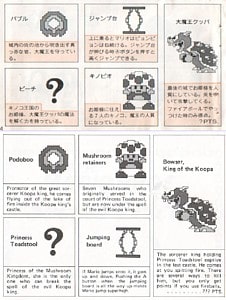 |
But if you actually look closely at both PDFs, you’ll see that they’re not exactly the same – the Mushroom Retainer was relocated. It’s such a weird thing to change, I can’t imagine why they did it.
Okay, anyway, let’s get to the descriptions!
In the American version, the Mushroom Retainers’ description says, “Seven Mushrooms who originally served in the court of Princess Toadstool, but are now under the spell of the evil Koopa king.”
The Japanese version is a little bit different: “Seven Mushrooms who serve the princess. The Demon King is holding them hostage.”
Basically, the American version adds in the thing about the Princess’s court and completely changes the hostage thing to say that the retainers are under Bowser’s spell. That last one doesn’t make much sense though – if they’re under his spell, shouldn’t they be doing his bidding or at least be doing something? Instead, they’re all being protected by fake Bowsers in the deepest parts of each castle. In any case, I’m not really sure why they’d make a change like that.
 |
Bowser
There’s no major difference here, but just because he’s an important character I’ll list Bowser’s descriptions too.
In English, his description is, “The sorcerer king holding Princess Toadstool captive in the last castle. He comes at you spitting fire. There are several ways to kill him, but you only get points if you use fireballs.”
In the Japanese manual, the description is, “He’s holding the princess captive in the final castle. Attacks by breathing fire. You only earn points by defeating him with fireballs.”
Looking at them more closely, we see the American version adds in a part about him being a “sorcerer” and then a part about there being “several ways to kill him”.
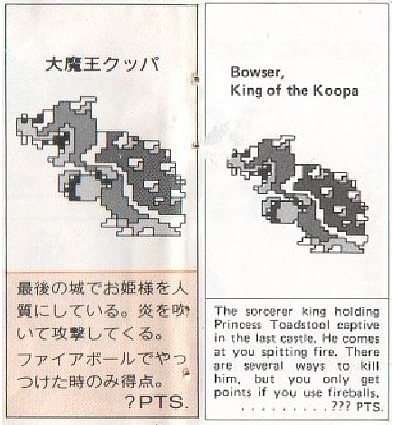 |
Princess
And since we’re at it, here’s the princess’ descriptions. No real changes here, I’m including it mostly just for fans’ reference.
The English description says, “Princess of the Mushroom Kingdom, she is the only one who can break the spell of the evil Koopa king.”
The Japanese description says, “Princess of the Mushroom Kingdom, she possesses the power to lift Great Demon King Koopa’s spell.”
I guess if you HAD to find a difference, it’d be in the word “only”, but the story at the start of the game already mentions that she’s the only one who can lift the spell, so there’s nothing wrong here.
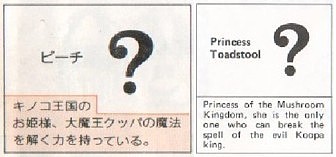 |
The Hopping Trick
On the last page of both manuals is a blurb that explains that if you stomp multiple enemies in a row, you’ll get extra points.
In the American manual, it says, “Use the old ‘Domino Effect’ (ask your parents) to wipe out a bunch of bad guys one after the other to get high points.”
The “ask your parents” part is pretty silly, plus for something that’s supposed to be enlightening, using a term kids don’t know isn’t very helpful at all!
In the Japanese manual, the same line goes like, “If you attack multiple enemies all in a row, you’ll earn high points.”
No mention of “domino effects” or anything else of the sort. Must’ve been something someone at NOA added for fun.
Similarly, in the next tip about coins, the American manual adds in a comment in parentheses that says, “why do ya’ suppose this is under Chain-reaction Techniques?” This isn’t in the Japanese manual at all, so someone must’ve been having fun working on this part of the American manual.
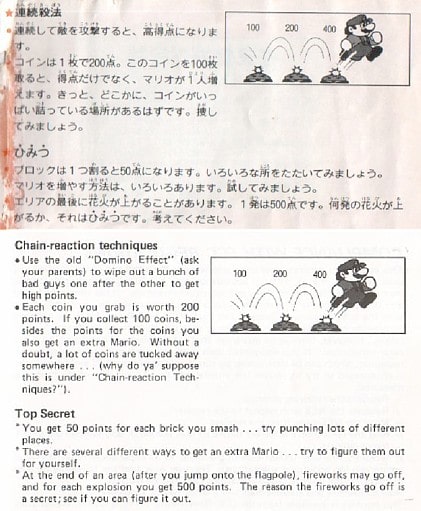 |
Other Stuff
Besides what I’ve listed here, there are lots of other tiny, tiny differences and nuance changes, but I’m not about to go that in-depth. None of it is very interesting anyway. But if you happen to have both manuals and know Japanese (and presumably English if you’re reading this) then check ’em out and see these changes for yourself!


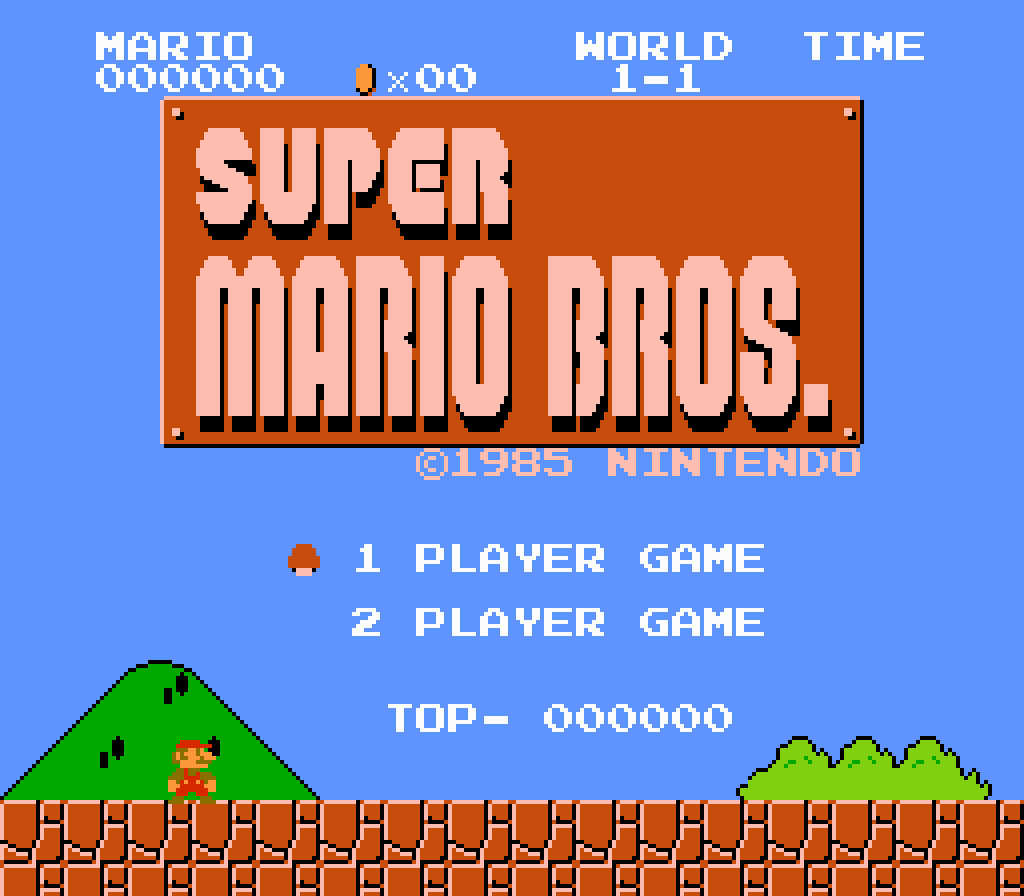
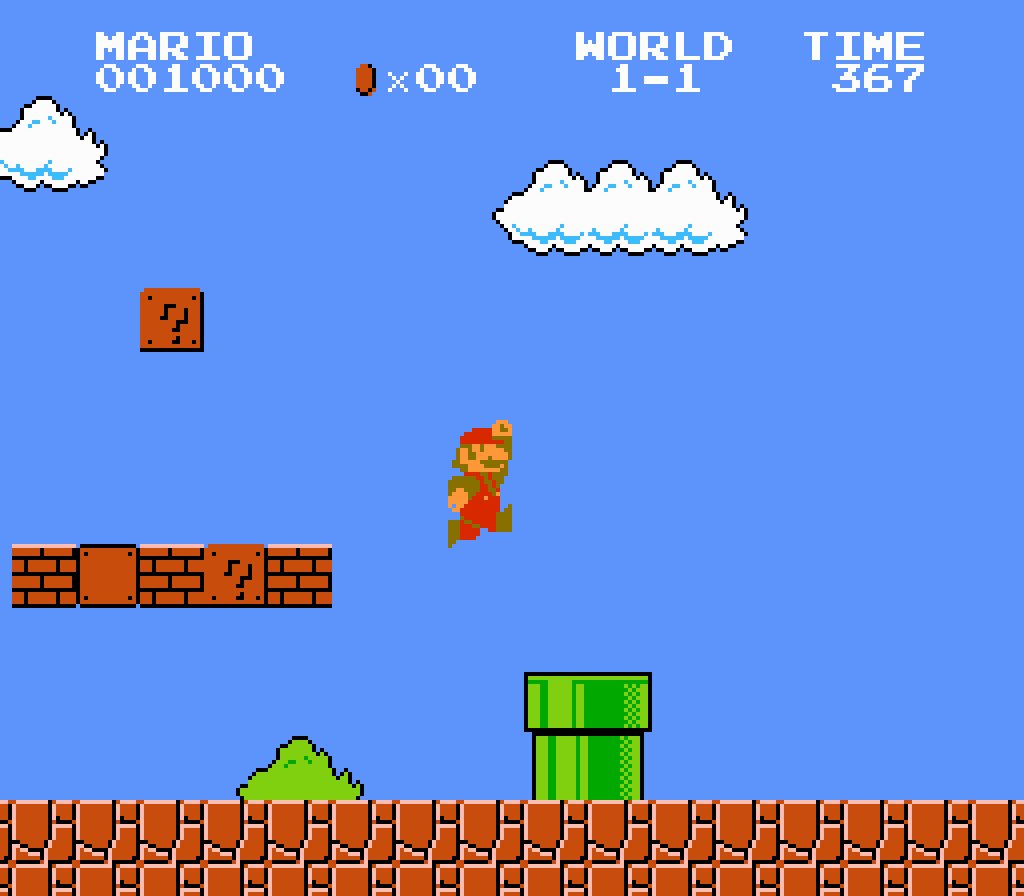
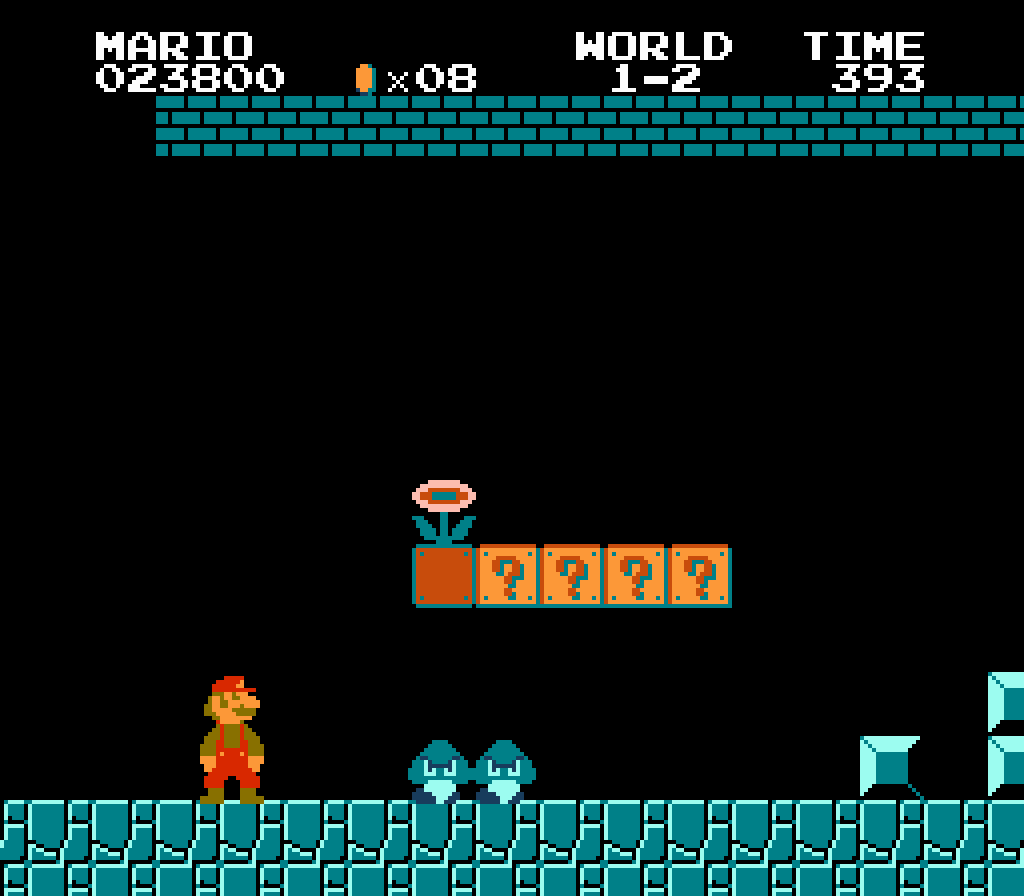
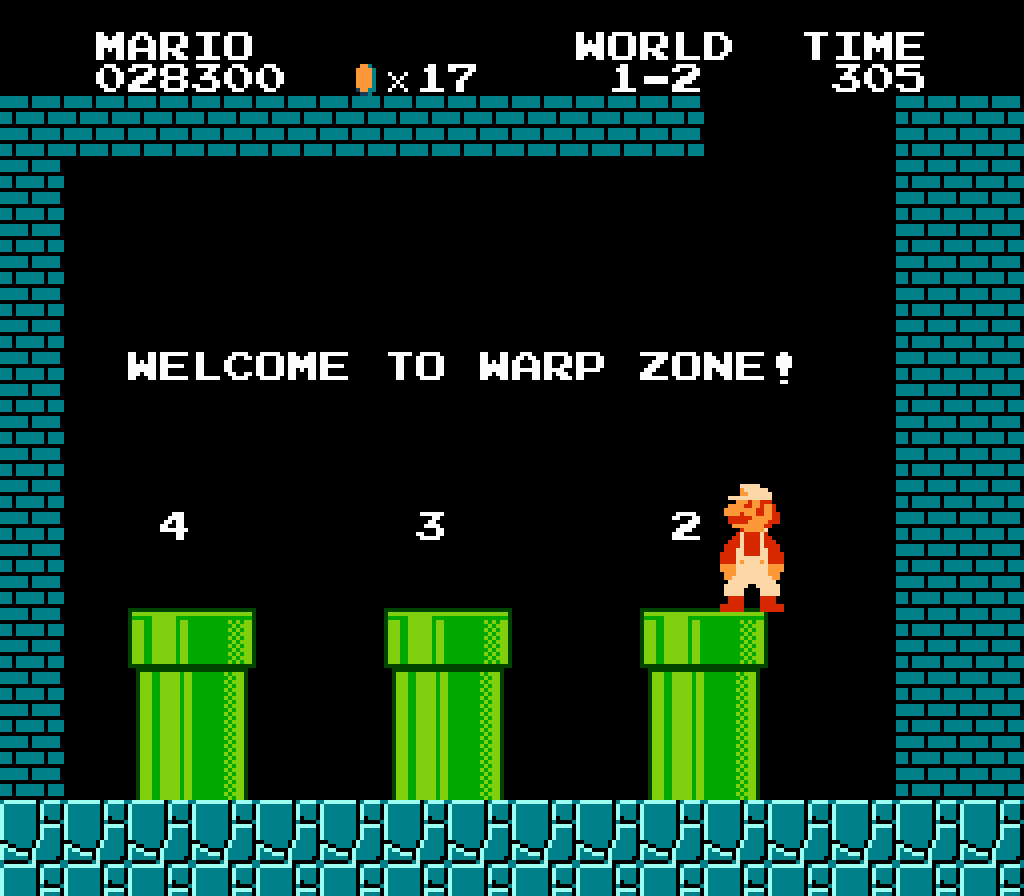
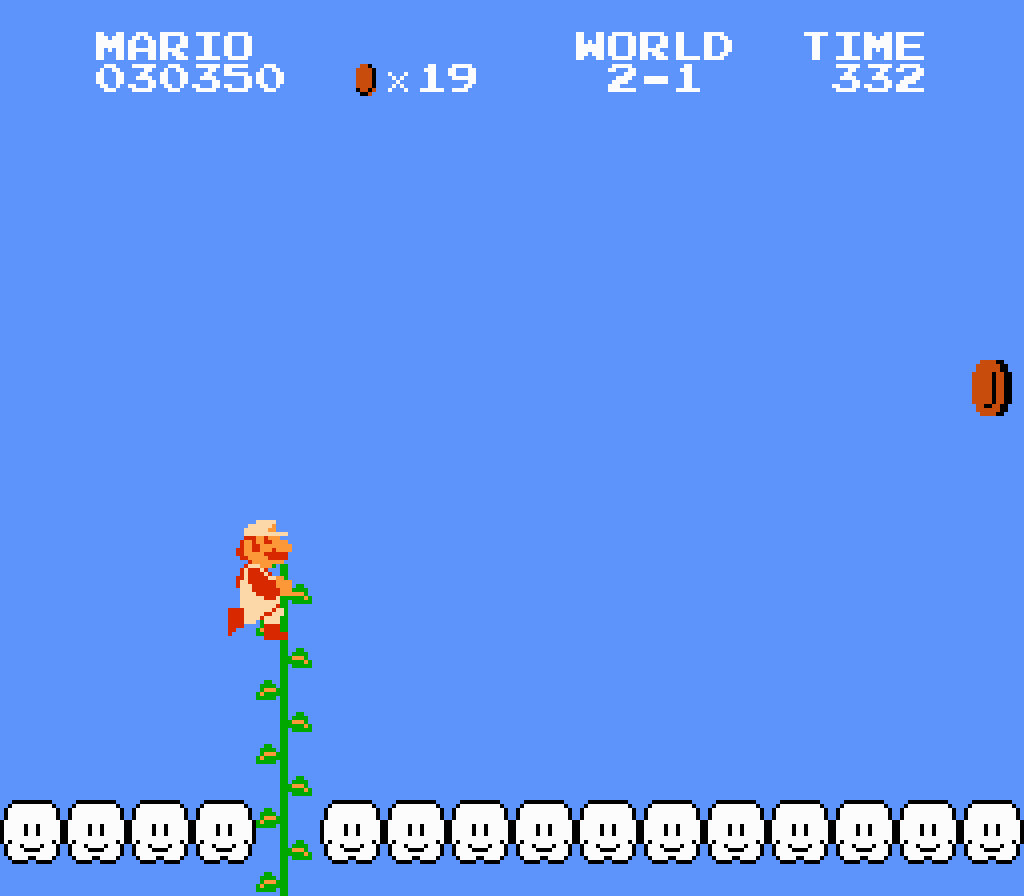
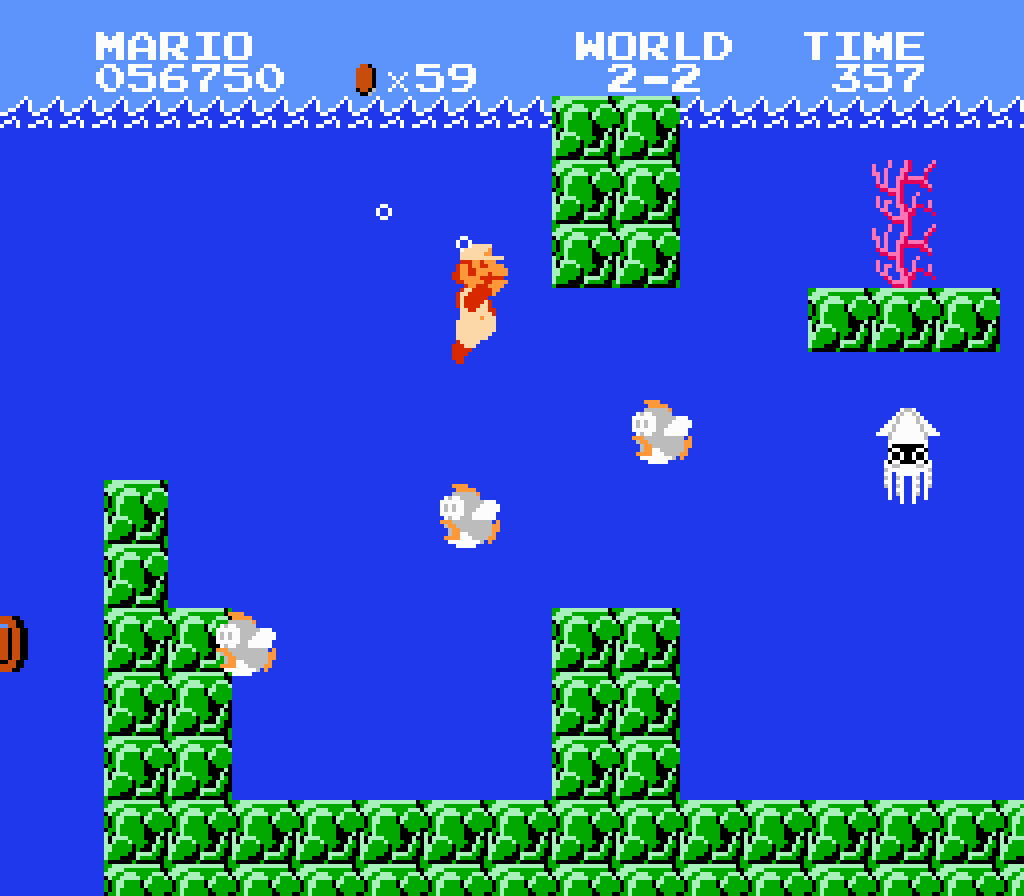
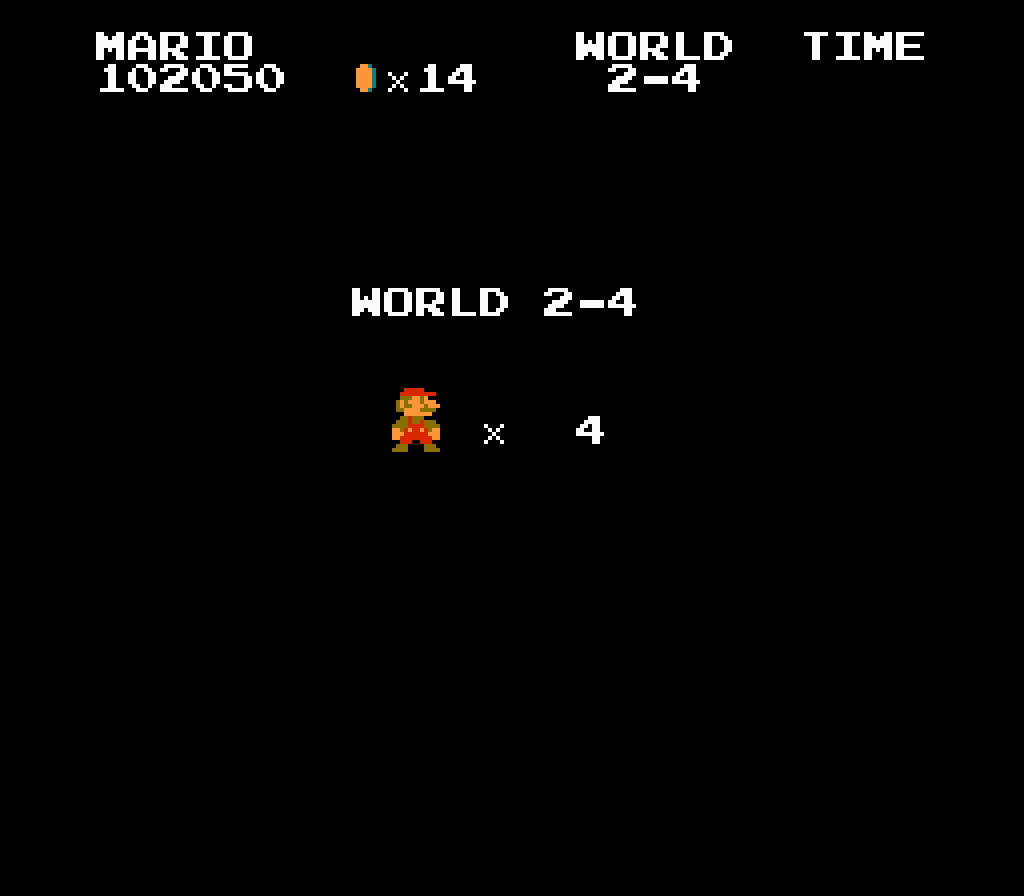
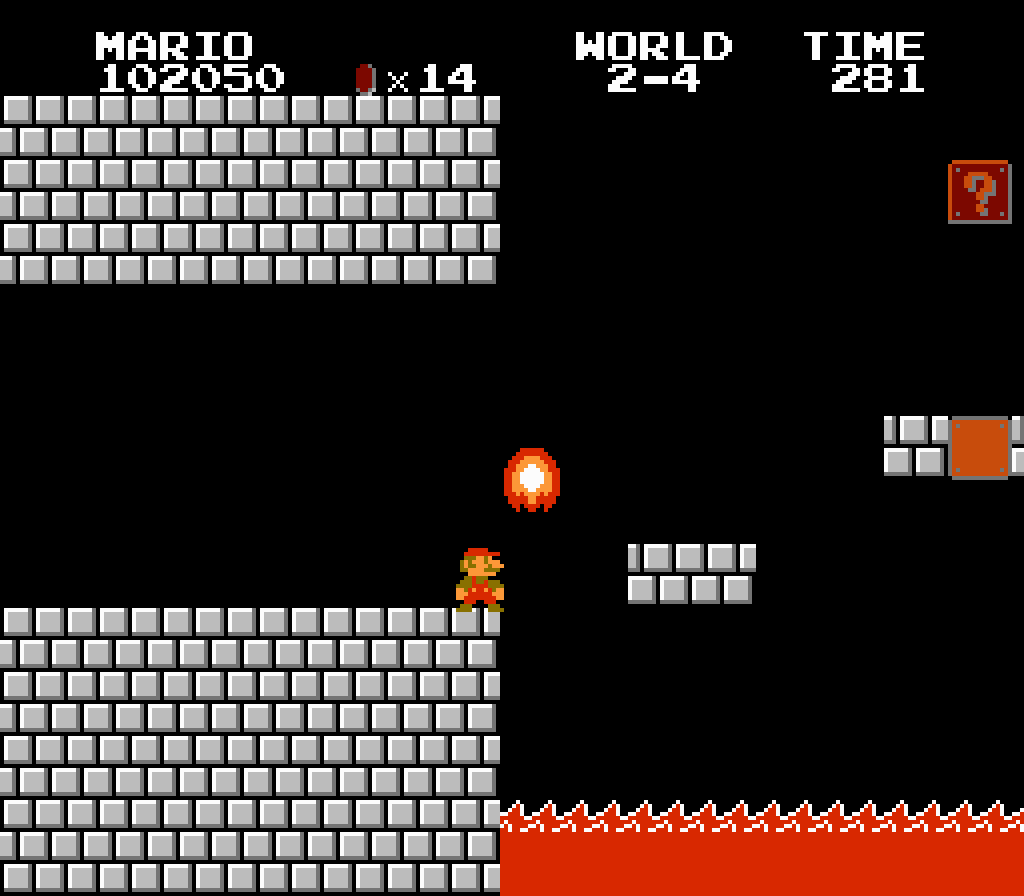
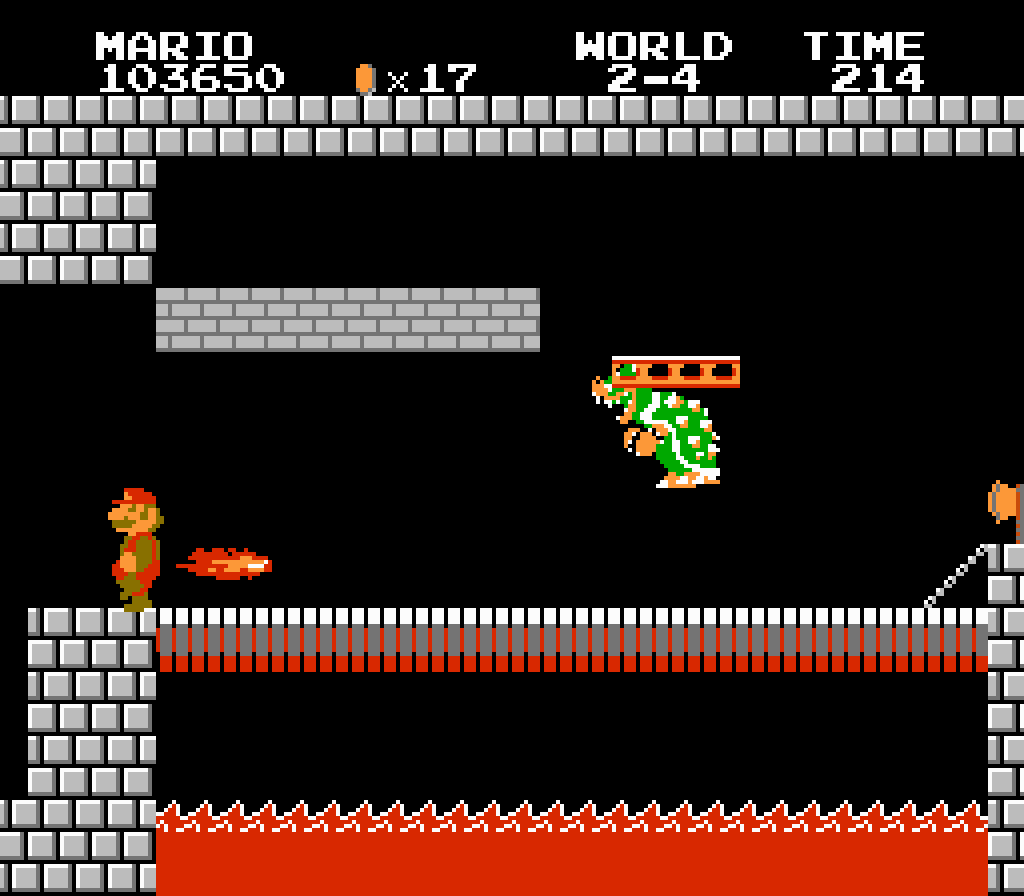
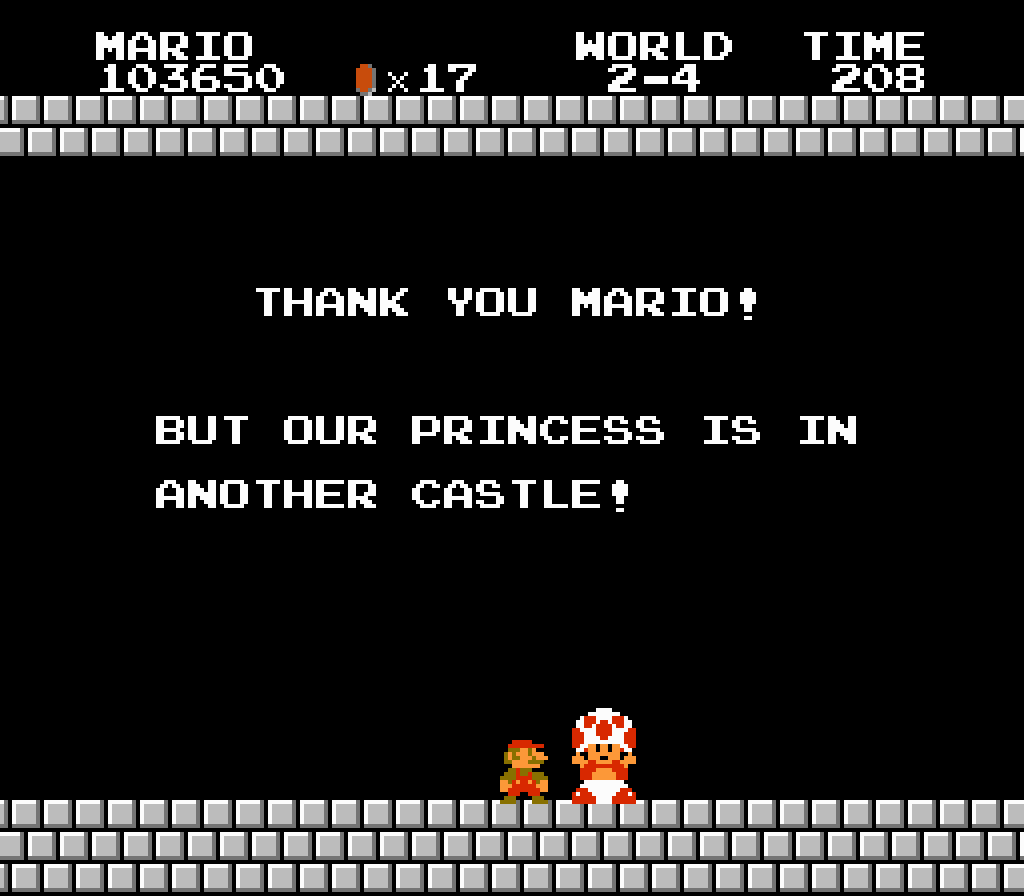

No Comments